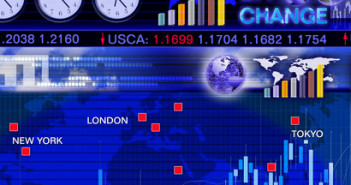Month-end flows and portfolio rebalancing activities are dominating price action in the currency markets this morning, with investors retracing their steps after big moves over the last week. The euro has come off yesterday’s three-month low, slipping back into its recent trading range in overnight trading.
The yen is stabilizing after last night’s inflation-driven surge, with participants increasingly betting that the Bank of Japan will take its foot off the monetary accelerator in the months to come.
The Canadian dollar is clinging to its gains ahead of today’s GDP report, with observers expecting to see a slight moderation in activity after last month’s 2.5% print. As the number disappointed, the Bank of Canada’s recent dovishness will appear justified, and the currency will weaken.
Aussie dollars are up almost half a percent, marking the best performance among the majors after data was released last night, showing that businesses are planning to invest much more than previously forecast. To an extent, the economy is exhibiting more resilience than expected in the face of China’s slowdown, helping investors turn more positive about the country’s prospects.
Greenbacks continue to look unappetizing, with depressed yields taking a toll on the currency – even as an expected growth rebound propels equity markets higher. Few expect this to last however – with inventories poised for sale, and consumer sentiment shifting into positive territory, data releases are expected to improve and the Fed’s policy mandate is likely to change.
Scylla and Charbydis:
The legendary investor Sir John Templeton once said, “Bull markets are born on pessimism, grow on skepticism, mature on optimism, and die on euphoriaâ€. With global equity bourses sitting near historic highs, yields at record lows, and currency volatility at astonishingly depressed levels, it is difficult to suggest that skepticism still rules the financial world.
The S&P 500 has now gone more than 620 days without a 3% move, and investors across the planet are buying into two related ideas – that economies will continue to grow, and that central banks will keep the markets well irrigated into the longer term.
However, these ideas are essentially contradictory – on one hand, if the global expansion continues, less monetary stimulus will be required. On the other, if the spigots remain open, it will be due to a slowdown in growth.
Policymakers are increasingly aware that today’s tranquility is dangerous, and will do their best to avoid blowing air into asset price bubbles in the coming months.
Going into next Thursday’s European Central Bank meeting, corporate hedgers should keep this reality in mind. Once Mr. Draghi has unloaded his howitzer, participants will inevitably begin positioning for a change in monetary conditions. If we are correct, they will come to the conclusion that macro policy will resume tightening – and this could lead to a resurgence in euro buying.
Overall, a shift in the currency markets appears imminent, but no one knows exactly what form it will take. As we have suggest for the last few months, complacency is dangerous – we would urge corporates to remain vigilant over the coming weeks….
Further reading:Â The US dollar advanced modestly in May



